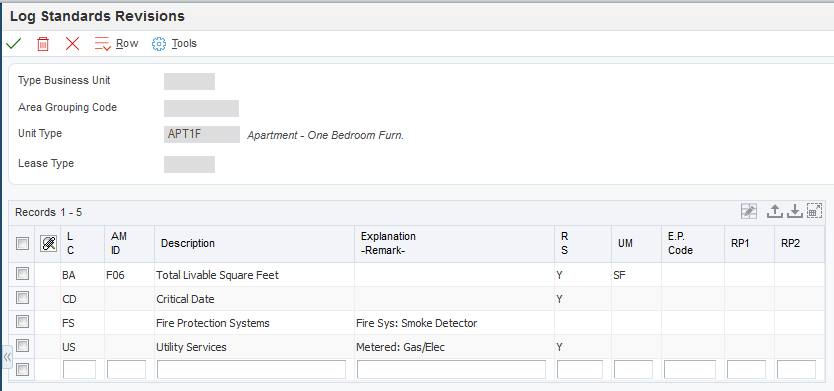Setting Up Log Standards
Access the Log Standard Revisions form.

- L C (log class)
Enter a user-defined code from UDC table 15/LG that identifies the type of information that the log contains. Examples include:
OP: First renewal option.
IN: Insurance.
PK: Parking spaces.
TI: Tenant improvements.
- AM ID (amenity ID)
Enter the four-character user-defined code from UDC table 15/AM that is used to provide additional information about the class to which the log belongs. For example, if the log class represents building features, you can use the amenity ID to further define a feature, such as atrium. Examples include:
F01: Number of rentable units
F02: Seating capacity
INS: Insurance renewal
SEWR: Sewer hookups
- Explanation -Remark
Enter a name or remark that describes the purpose for using an account or that conveys any other information about the transaction.
- R S (required standards)
Enter a value that specifies whether the log line is a required standard for the lease. Values are:
Blank or N: The log line is not a required standard.
Y: The log line is a required standard and cannot be deleted from the model. If you select this value, the system disables the LC (log class), AM ID (amenity ID), and UM (unit of measure) fields for revisions.
- E.P. Code (expense participation code)
Enter a user-defined code from UDC table 15/EP that identifies a log line used for the control square footage of a property or building. The system uses this control square footage to calculate expense participation.
- RP1 (reporting code pm log 01)
Enter a user-defined code UDC table 15/L1–L10 that specifies a group for reporting purposes. You can set up the field names in vocabulary overrides.